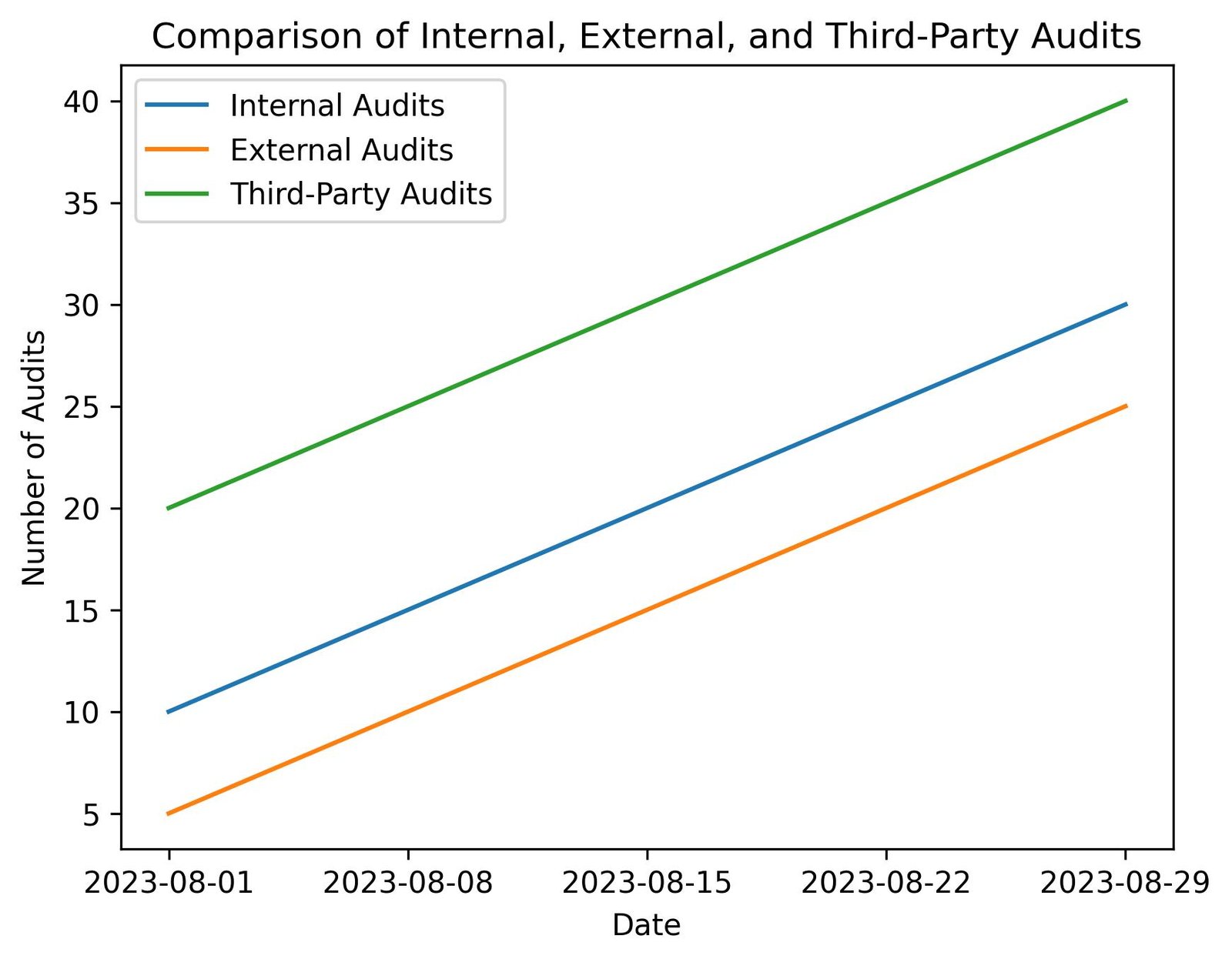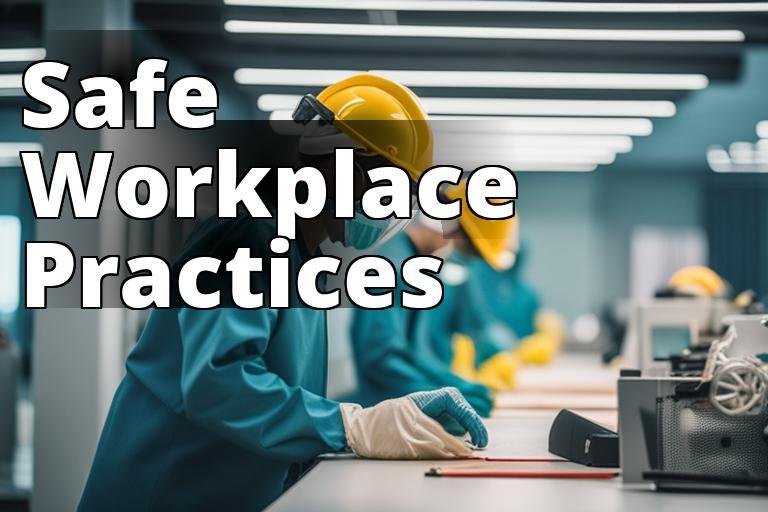Safety audits are an essential part of ensuring workplace safety and preventing accidents and injuries. By conducting safety audits, companies can identify potential hazards and risks, take corrective actions, and create a safer and healthier workplace. In this guide, we will define safety audits, discuss their purpose, and provide tips and strategies for conducting effective safety audits.

Definition and Purpose of Safety Audits
A. Definition of Safety Audits
A safety audit is a systematic review of a workplace’s safety policies, procedures, and practices to identify potential hazards and risks. Safety audits can be conducted internally, externally, or by third-party auditors to ensure compliance with regulatory requirements, industry standards, and best practices.
B. The Purpose of Safety Audits in Health and Safety
The purpose of safety audits is to ensure that workplaces are safe and healthy for employees, customers, and the public. Safety audits help companies identify potential hazards and risks and take corrective actions to prevent accidents and injuries. Safety audits also ensure that companies comply with regulatory requirements and industry standards.
C. Importance of Safety Audits in Identifying Potential Hazards and Risks
Safety audits are essential in identifying potential hazards and risks in the workplace. By conducting safety audits, companies can prevent accidents and injuries caused by unsafe conditions, equipment, and practices. Safety audits also help companies identify potential hazards and risks that may not be visible to employees or management.
D. How Safety Audits Can Prevent Accidents and Injuries
Safety audits can prevent accidents and injuries by identifying potential hazards and risks and taking corrective actions. By conducting safety audits, companies can ensure that their safety policies, procedures, and practices are up to date and effective. Safety audits can also help companies create a safety culture that promotes safe and healthy practices.
Summary
This article provides a complete guide on conducting safety audits to ensure workplace safety. It covers the definition and purpose of safety audits, the types of safety audits, preparing for a safety audit, conducting a safety audit, common safety audit findings, corrective actions, benefits of safety audits, safety audits in different industries, and legal requirements for safety audits.
– Safety audits are important for identifying potential hazards and risks in the workplace and preventing accidents and injuries.
– There are different types of safety audits, including internal audits, external audits, and third-party audits.
– Companies can prepare for safety audits by conducting a gap analysis, reviewing policies and procedures, ensuring a clean and organized workplace, providing training to employees, and fostering a safety culture.

Types of Safety Audits
A. Internal Audits
Internal audits are conducted by the company’s internal auditors or safety personnel. Internal audits are designed to assess the company’s safety policies, procedures, and practices and identify potential hazards and risks.
B. External Audits
External audits are conducted by external auditors hired by the company or regulatory agencies. External audits are designed to ensure compliance with regulatory requirements and industry standards.
C. Third-party Audits
Third-party audits are conducted by independent auditors hired by the company or regulatory agencies. Third-party audits are designed to provide an unbiased assessment of the company’s safety policies, procedures, and practices.
D. Comparison of Each Type of Audit
Each type of audit has its advantages and disadvantages. Internal audits are cost-effective and provide an in-depth analysis of the company’s safety policies, procedures, and practices. External audits ensure compliance with regulatory requirements and industry standards. Third-party audits provide an unbiased assessment of the company’s safety policies, procedures, and practices.
Preparing for a Safety Audit
A. Conducting a Gap Analysis
Before conducting a safety audit, companies should conduct a gap analysis to identify potential areas of improvement. A gap analysis involves comparing the company’s safety policies, procedures, and practices with regulatory requirements, industry standards, and best practices.
B. Reviewing Policies and Procedures
Companies should review their safety policies and procedures before conducting a safety audit. Safety policies and procedures should be up to date, effective, and compliant with regulatory requirements and industry standards.
C. Ensuring the Workplace is Clean and Organized
Companies should ensure that the workplace is clean and organized before conducting a safety audit. A clean and organized workplace reduces the risk of accidents and injuries and creates a safer and healthier workplace.
D. Providing Training to Employees
Companies should provide training to employees before conducting a safety audit. Employees should be trained on safety policies, procedures, and practices and be aware of potential hazards and risks in the workplace.
E. Importance of Having a Safety Culture in the Workplace
Companies should have a safety culture that promotes safe and healthy practices. A safety culture involves creating a workplace where employees feel comfortable reporting potential hazards and risks and where safety is a top priority.

Conducting a Safety Audit
A. Overview of What Happens During a Safety Audit
During a safety audit, auditors will review the company’s safety policies, procedures, and practices and identify potential hazards and risks. Auditors will also interview employees, review records, and observe work practices.
B. What Auditors Typically Look for During a Safety Audit
Auditors typically look for potential hazards and risks in the workplace, including unsafe conditions, equipment, and practices. Auditors will also review the company’s safety policies, procedures, and practices to ensure compliance with regulatory requirements and industry standards.
C. Importance of Interviewing Employees
Interviewing employees is an essential part of conducting a safety audit. Employees can provide valuable information about potential hazards and risks in the workplace and suggest improvements to safety policies, procedures, and practices.
D. Reviewing Records and Observing Work Practices
Reviewing records and observing work practices is another essential part of conducting a safety audit. Records can provide valuable information about the company’s safety policies, procedures, and practices, while observing work practices can identify potential hazards and risks.
E. Conducting Effective Safety Audit
To conduct an effective safety audit, companies should ensure that their safety policies, procedures, and practices are up to date and compliant with regulatory requirements and industry standards. Companies should also provide training to employees, ensure a clean and organized workplace, and have a safety culture that promotes safe and healthy practices.

Common Safety Audit Findings
A. Issues Related to Machine Guarding
Machine guarding is an essential part of preventing accidents and injuries in the workplace. Common safety audit findings related to machine guarding include missing or inadequate guards, improper use of guards, and inadequate training on machine guarding.
B. Electrical Safety
Electrical safety is another important aspect of workplace safety. Common safety audit findings related to electrical safety include improper grounding, exposed electrical parts, and inadequate training on electrical safety.
C. Hazardous Materials
Hazardous materials can pose a significant risk to employees and the environment. Common safety audit findings related to hazardous materials include inadequate storage, improper labeling, and inadequate training on handling hazardous materials.
D. Personal Protective Equipment (PPE)
Personal protective equipment (PPE) is essential in preventing accidents and injuries in the workplace. Common safety audit findings related to PPE include inadequate PPE, improper use of PPE, and inadequate training on PPE.
E. Fire Safety
Fire safety is another critical aspect of workplace safety. Common safety audit findings related to fire safety include inadequate fire protection systems, blocked fire exits, and inadequate training on fire safety.
Corrective Actions
A. Developing an Action Plan
After conducting a safety audit, companies should develop an action plan to address any findings. An action plan should identify corrective actions, assign responsibility for implementing changes, and establish a timeline for completing the changes.
B. Assigning Responsibility for Implementing Changes
Companies should assign responsibility for implementing changes to ensure that corrective actions are completed effectively. Assigning responsibility for implementing changes can also promote accountability and ownership of the corrective actions.
C. Following up to Ensure that Changes Have Been Made
Following up on corrective actions is essential to ensure that changes have been made effectively. Following up can also identify any potential gaps or issues in the corrective actions and ensure that the workplace remains safe and healthy.
D. Importance of Continuous Improvement
Continuous improvement is essential in maintaining a safe and healthy workplace. Companies should continuously review and improve their safety policies, procedures, and practices to ensure that the workplace remains safe and healthy.
E. How to Implement Corrective Actions Effectively
To implement corrective actions effectively, companies should ensure that corrective actions are feasible, effective, and sustainable. Companies should also provide training to employees, establish a timeline for completing the changes, and ensure that corrective actions are monitored and evaluated.
Benefits of Safety Audits
A. Reducing the Risk of Accidents and Injuries
Safety audits can reduce the risk of accidents and injuries by identifying potential hazards and risks and taking corrective actions. By conducting safety audits, companies can create a safer and healthier workplace.
B. Improving Employee Morale
Safety audits can improve employee morale by promoting a safety culture that prioritizes employee safety and health. Employees who feel safe and healthy are more productive and engaged in their work.
C. Avoiding Fines and Penalties from Regulatory Agencies
Safety audits can help companies avoid fines and penalties from regulatory agencies by ensuring compliance with regulatory requirements and industry standards.
D. Enhancing the Reputation of the Company
Safety audits can enhance the reputation of the company by demonstrating a commitment to employee safety and health. A positive reputation can attract customers and employees and enhance the company’s competitiveness.
E. Boosting Productivity and Profitability
Safety audits can boost productivity and profitability by reducing the risk of accidents and injuries and promoting a safe and healthy workplace. A safe and healthy workplace can also reduce absenteeism and turnover and enhance employee engagement and productivity.
Case Study: The Impact of Safety Audits on Workplace Safety
In a manufacturing company called XYZ Industries, safety has always been a top priority. However, they wanted to ensure that their safety measures were up to par and that there were no potential hazards that had been overlooked. They decided to conduct a safety audit to identify any areas for improvement and to reinforce their commitment to workplace safety.
During the safety audit, the auditors interviewed employees from various departments and observed work practices. They discovered that some employees were not wearing the appropriate personal protective equipment (PPE) while operating certain machinery. Additionally, they found that the machine guarding in some areas was inadequate, which posed a significant risk to the employees.
Upon receiving the audit findings, XYZ Industries took immediate action to address the issues identified. They developed an action plan that included providing additional training on PPE usage and installing proper machine guarding. The responsibility for implementing these changes was assigned to the respective department heads, who ensured that the necessary steps were taken.
After the corrective actions were implemented, XYZ Industries noticed a significant improvement in workplace safety. Accidents and injuries decreased, and employee morale increased as they felt safer and more protected at work. Additionally, the company avoided potential fines and penalties from regulatory agencies, which enhanced their reputation as a responsible employer.
The safety audit not only helped XYZ Industries identify and rectify potential hazards but also instilled a culture of safety in the workplace. Employees became more aware of the importance of following safety protocols and actively participated in maintaining a safe working environment.
This case study demonstrates how safety audits can have a direct and positive impact on workplace safety. By conducting regular audits and taking prompt corrective actions, companies like XYZ Industries can proactively prevent accidents and injuries, improve employee morale, and ensure compliance with legal requirements.
Safety Audits in Different Industries
A. Safety Audits in Construction Industry
In the construction industry, safety audits are essential in preventing accidents and injuries caused by unsafe conditions, equipment, and practices. Safety audits in the construction industry should focus on machine guarding, fall protection, electrical safety, and hazard communication.
B. Safety Audits in Healthcare Industry
In the healthcare industry, safety audits are essential in preventing accidents and injuries caused by hazardous materials, needle sticks, and patient handling. Safety audits in the healthcare industry should focus on infection control, personal protective equipment, and emergency preparedness.
C. Safety Audits in Manufacturing Industry
In the manufacturing industry, safety audits are essential in preventing accidents and injuries caused by machine guarding, electrical safety, and hazardous materials. Safety audits in the manufacturing industry should focus on machine guarding, lockout/tagout, and hazard communication.
D. Safety Audits in Transportation Industry
In the transportation industry, safety audits are essential in preventing accidents and injuries caused by vehicle crashes, hazardous materials, and fatigue. Safety audits in the transportation industry should focus on driver safety, vehicle maintenance, and hazardous materials.
E. Safety Audits in Other Industries
Safety audits are essential in all industries to ensure workplace safety and prevent accidents and injuries. Safety audits should focus on identifying potential hazards and risks and taking corrective actions to create a safer and healthier workplace.
Legal Requirements for Safety Audits
A. OSHA Standards for Safety Audits
The Occupational Safety and Health Administration (OSHA) has established standards for safety audits in the workplace. OSHA requires that employers provide a safe and healthy workplace and comply with regulatory requirements and industry standards.
B. Other Regulatory Requirements for Safety Audits
Other regulatory agencies may have specific requirements for safety audits, depending on the industry and the type of hazards and risks involved. Companies should ensure compliance with regulatory requirements and industry standards to avoid fines and penalties.
C. How to Comply with Legal Requirements for Safety Audits
To comply with legal requirements for safety audits, companies should ensure that their safety policies, procedures, and practices are up to date and effective. Companies should also provide training to employees, ensure a clean and organized workplace, and have a safety culture that promotes safe and healthy practices.
Conclusion:
Safety audits are essential in ensuring workplace safety and preventing accidents and injuries. By following the tips and strategies outlined in this guide, companies can prepare for safety audits, conduct safety audits effectively, and take corrective actions to address any findings. The benefits of safety audits are numerous, and they can help companies create a safer, healthier, and more productive workplace.




